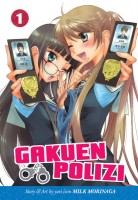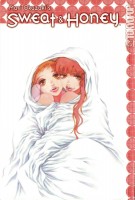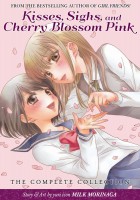 Creator: Milk Morinaga
Creator: Milk Morinaga
U.S. publisher: Seven Seas
ISBN: 9781626920309
Released: June 2014
Original release: 2013
I greatly enjoyed the first two manga series by Milk Morinaga to be released in English—Girl Friends and Kisses, Sighs, and Cherry Blossom Pink—and so was happy to see Seven Seas license one of her most recent series: Gakuen Polizi. The first volume of Gakuen Polizi was originally published in Japan in 2013 while Seven Seas’ edition was published in 2014. Currently, Morinaga is likely the best-represented yuri creator in English in that she now has the most titles available in translation. Granted, considering how few yuri manga have been released, especially when compared to other genres, that really isn’t too difficult. Still, her work has generally been well-received. Gakuen Polizi is a bit different from Morinaga’s other manga in English. She describes it as a “high school police drama” which is more or less accurate. The series has more of a buddy cop feel to it than it does romance or drama and is inherently more comedic as well.
Ever since she was young, Sasami Aoba has wanted to be a champion of justice, dreaming of crushing evil and helping the weak, and now she finally has her chance as an assistant police officer. Specifically, Sasami has been assigned to Hanagaki Girls’ High School as one of its polizi—a young undercover cop sent to investigate issues at problem schools. The only thing is Hanagaki doesn’t actually seem to have any problems. There’s no bullying, the students and staff are all very pleasant, and even the school’s newspaper has difficulty finding juicy material to report on. Hanagaki is actually the second assignment for Sasami’s partner Sakuraba Midori. Before Sasami’s arrival, and because the school is so peaceful, Sakuraba has had plenty of time on her hands, quite a bit of which she would spend distracting herself by drawing yaoi manga. But now with the less-experienced and overly eager Sasami constantly on the verge of blowing their cover as polizi, Sakuraba has more than enough to worry about.
Gakuen Polizi is kind of a strange mashup of genres. Since nothing much happens in the way of crime at Hanagaki, there’s not much for Sasami and Sakuraba to be doing in regards to police work. The series is generally lighthearted and often silly, especially towards its beginning. At first the cases at the school are fairly inconsequential—a dog with a penchant for stealing things, small squabbles between classmates, and so on. The second half takes a more serious turn, dealing with gropers and stalkers, but even then the humor in Gakuen Polizi is a prominent feature. Most of the comedy revolves around Sasami. She is very enthusiastic and passionate, but somewhat lacking in common sense. Sakuraba, in stark contrast, is more serious and reserved. According to the afterword, readers should expect more romance-related drama to come in the series, but there is very little of that to be seen in the first volume of Gakuen Polizi, though a chemistry between Sasami and Sakuraba has begun to develop.
It is fairly obvious that Morinaga is personally having a lot of fun with Gakuen Polizi. I found the first volume to be entertaining, but readers approaching the manga hoping for a series similar to Kisses, Sighs, and Cherry Blossom Pink or Girl Friends will most likely be disappointed. Though Gakuen Polizi has the potential for some drama and romance, so far the series tends towards the absurd and ridiculous. Morinaga’s artwork and character designs are cute, with particularly dynamic facial expressions that add to the series’ silliness. While I like the characters in Gakuen Polizi, I’m not attached to them in the same way that I was to the characters in Morinaga’s other manga. I do find Sasami, Sakuraba, and their friends to be amusing though. Gakuen Polizi isn’t meant to be taken too seriously. The emphasis is definitely more on the series’ comedy than it is on its believability. Overall, Gakuen Poilizi, Volume 1 was largely an enjoyable, fluffy read. Although I may not be desperate for more, I do look forward to reading the next volume.




